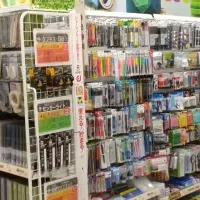
The Expanding STEM Toys Market: Insights and Growth Trends Driven by APAC and AI Innovations
Overview of the STEM Toys Market
The global market for STEM (Science, Technology, Engineering, and Mathematics) toys is set to experience remarkable growth, driven significantly by developments in technology and increasing interest from consumers, particularly in the Asia-Pacific region. According to a report by Technavio, it is projected that the market will expand by approximately USD 8.09 billion between 2024 and 2028, reflecting a compound annual growth rate (CAGR) of 8.89% during this forecast period.
The APAC Influence
One of the most notable aspects of the STEM toy market's growth is the contribution of the Asia-Pacific region, which is expected to account for 42% of the total market expansion. Countries such as China, Japan, South Korea, and India are leading the charge, propelled by rising disposable incomes and a growing emphasis on educational initiatives. This regional focus not only reflects economic growth but also a cultural shift towards prioritizing science and technology education from an early age.
Factors Driving Market Growth
Several factors are contributing to the robust growth of the STEM toys market. Firstly, there is a heightened awareness among parents regarding the importance of early education in STEM subjects. This awareness has pushed families to seek out innovative learning tools that make education engaging. Toys that promote hands-on interaction stimulate critical thinking and problem-solving skills, which are essential in today’s tech-driven world.
Moreover, the demand for in-home STEM educational resources is on the rise. The COVID-19 pandemic has accelerated this trend, with many parents now looking for effective, screen-free alternatives that combine fun and learning. STEM toys, such as robot-building kits and educational electronic games, offer a compelling solution that meets both criteria.
Market Segmentation
The STEM toys market is segmented by various factors, including application (in-home vs. in-school), age group (6-8 years, 9-10 years, and 11-13 years), and the specific subject areas covered (science, engineering, mathematics, and technology). Each segment presents unique opportunities and challenges for market players, shaping how products are developed and marketed.
1. Application: The in-home segment is witnessing the most significant growth, as families increasingly invest in educational toys that can enhance their children's learning experience within the comfort of their homes.
2. Age Group: As educational standards rise, products tailored for younger age groups are gaining traction, comprising key growth segments.
3. Subject Areas: A diverse array of subject-based toys appeals to a broad spectrum of interests, allowing children to explore various fields within STEM.
The Role of AI
Artificial intelligence is also beginning to redefine the STEM toys landscape. Innovative product designs now incorporate AI elements, enhancing interactive learning experiences. Toys that adapt to a child's learning pace through AI algorithms are becoming increasingly popular, providing tailored educational outcomes that traditional toys cannot match.
Conclusion
The future of the STEM toys market looks optimistic, driven by APAC's substantial contributions and the growing influence of technology in developing educational products. As consumer interest continues to rise, manufacturers must innovate and adapt to meet the evolving demands of parents and children alike. The transition towards educational toys that not only entertain but also educate marks a significant shift in the toy industry, with STEM toys leading the charge in the age of learning through play. The period from 2024 to 2028 could well be a transformative time for this vibrant market.
To keep up with the latest trends and delve deeper into the market analysis, industry stakeholders are encouraged to engage with reports from market research firms like Technavio, which provide valuable insights and data critical for informed decision-making in this rapidly evolving landscape.
Topics Consumer Products & Retail)










【About Using Articles】
You can freely use the title and article content by linking to the page where the article is posted.
※ Images cannot be used.
【About Links】
Links are free to use.